When it comes to SEO, you should always keep your 301 redirects in place as long as possible. For example, 9 years ago I started with brianleejackson.com, which turned into okaymarketing.com, which turned into this site today: brianjackson.io. I built backlinks on that all three domains and there are some backlinks you can just never update manually on third-party sites. So the best strategy is to keep the 301s in place. I choose to implement my 301 redirects at the domain name registrar level.
What is a 301 Redirect?

So what is this 301 redirect I am talking about?
A redirect is a way to send both users and search engines to a different URL from the one they originally requested. – Moz
There are different types of redirects, but a 301 specifically means that the URL is moved permanently. This type of redirect is the most commonly used one when it comes to SEO. 301 redirects are commonly used in the following situations:
- You move your website to a new domain
- You are merging websites together
- You are moving content around from one domain to another
Google claims that a 301 redirect passes 99% of the link juice to the new URL. In my personal experience, I have never seen any dips from 301s, so I believe this is pretty accurate.
Why You Should Always Leave 301 Redirects in Place
So a big issue that SEOs always run into is how long do you need to keep old 301 redirects in place? Well, in my opinion, you should keep them in place as long as possible!
1. Link Juice
The first reason is link juice. All the work you did building backlinks to build up your domain authority will be lost if you simply remove the 301 redirects.
2. Backlinks
All those backlinks you built aren’t just helping build up your domain authority, they are also sending traffic to your website. And the authors of other websites linked to you because they decided you had something important to contribute to their post. You don’t want to be responsible for creating broken links on 3rd party sites or lose out on that traffic.
3. Indexing Issues
Many SEOs run into this issue. You remove an old 301 redirect, start updating the content at the new location and everything is going great. But then you check SERPs and realize that the old domain/URL is still indexed instead of your new one. John Mueller from Google recently tweeted a response to someone about this.
@iqseo @google @methode Well, a 301 is "permanent", so you'll have to be patient & convincing (eg, rel=canonical, internal links, etc)
— 🦙 johnmu.xml (personal) 🦙 (@JohnMu) December 10, 2015
Unfortunately, it is not always possible to leave 301 redirects in place. Perhaps you sold the old domain and you no longer have access to it. But if you do have access to it, leave your 301 redirects in place indefinitely! Better to play it safe than sorry.
Glenn Gabe from G-Squared Interactive LLC also agrees with me.
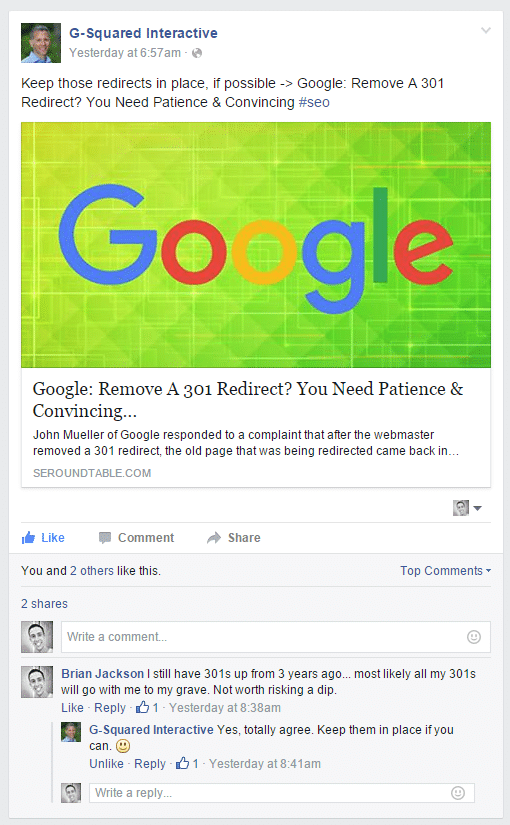
Implementing a 301 Redirect at Domain Registrar
So lots of people implement their 301 redirects at the server/web host level. I choose to go up one more level and make it a little easier by doing it at the domain registrar level. See my steps below on how I implemented my 301 redirects at NameCheap. I am using my okaymarketing.com domain as an example.
Step 1
At NameCheap, click into “Domain” and make sure your nameservers are set to “Namecheap default.” The DNS has to be pointed at NameCheap for you to be able to complete step 2.
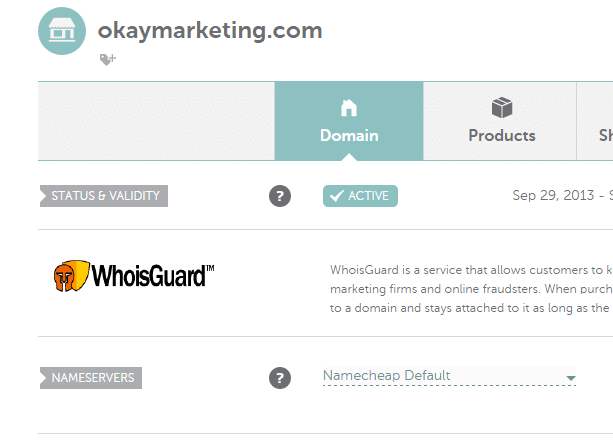
Step 2
Then click into “Advanced DNS.”
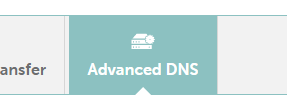
Step 3
So in my case, I did this for both brianleejackson.com and okaymarketing.com so they are flowing the link juice to brianjackson.io as I always moved the old content over. Google can chain up to 5 redirects. Since I completely moved domains, I kept the same URL structure which makes it very easy.
Add two URL redirect records as shown below. One with @ for the host and one with www for the host. Point them at your new domain.
The important part. Make sure you include a backslash in the value! Without the backslash it would simply redirect everything to your new homepage.
Example: http://okaymarketing.com/setup-goal-google-analytics-track-web-form/ redirects to https://brianjackson.com/setup-goal-google-analytics-track-web-form/
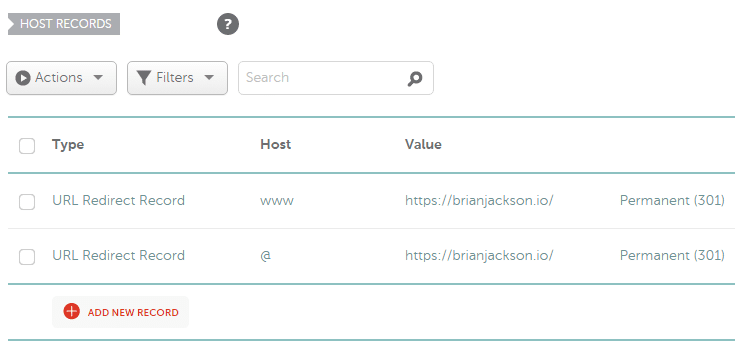
And that’s it! You now have 301 redirects in place at your domain registrar and don’t have to worry about doing anything at the server level. And in my case I can delete my old WordPress installations for those domains. You always want to double check your 301 redirects as well, by verifying the header response. In Chrome Dev Tools I fire up the network tab and input one of my old domains: brianleejackson.com.
You can see the request URL and then it is returning a “301 moved permanently” status code to a location of brianjackson.io which is correct.
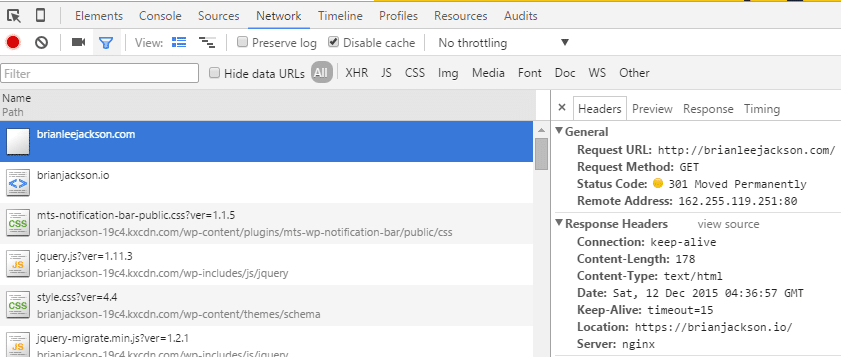
You can also use this free HTTP check tool to verify your headers. If this little tutorial on implementing a 301 redirect at your domain registrar was helpful, please let me know below. Also make sure to check out my other tutorial on how to setup wildcard 301 URL forwarding.
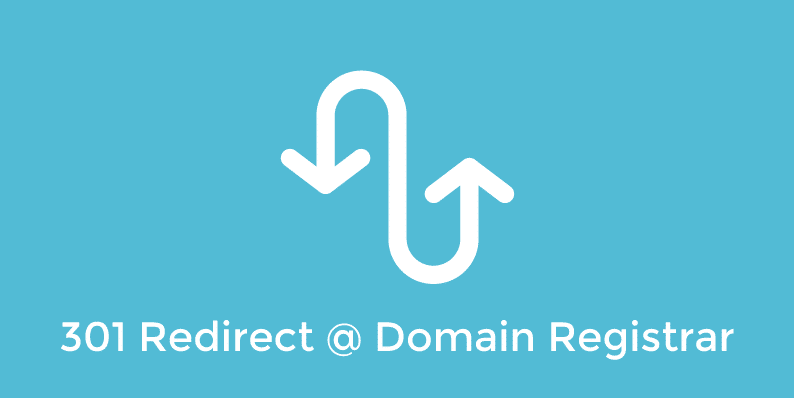
Ah.. i didn’t know this! Thanks for the tip!
I’ve seen mixed results with 301 redirects, but yes a domain level redirect saves you on Hosting costs
“make sure your nameservers are set to “Namecheap default.” The DNS has to be pointed at NameCheap….”
I have my old domain registered at Namecheap but when I set up third party hosting the host directed me to change DNS to theirs. I’m not following what one needs to do here. Can you elaborate for those whose DNS is already set to something other than Namecheap default?
Yes that is correct. Another alternative is to do free URL forwarding via Cloudflare: https://woorkup.com/free-url-forwarding/
Yours is the guide that should be in the Namecheap support area! Lucid and practical. Thanks!